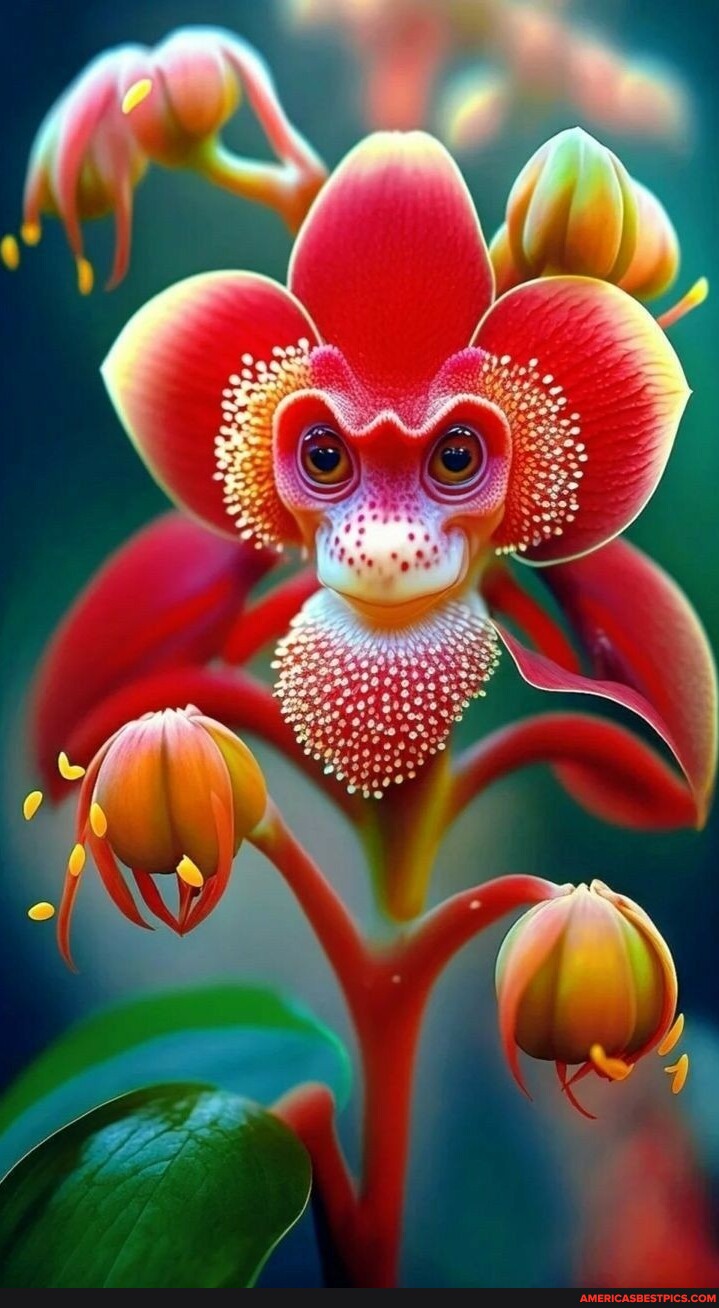In the enchanting depths of the forest, where nature’s boundless creativity knows no limits, a truly captivating spectacle awaits: the emergence of flowers bearing whimsical shapes reminiscent of monkeys, gracefully adorning the lush greenery. These extraordinary blooms, akin to playful guardians of the forest, stand out with their unique and intriguing forms, sparking curiosity and wonder among all fortunate enough to encounter them.

The monkey-shaped flowers belong to various plant species that have undergone evolutionary processes to produce blossoms resembling our primate counterparts. Through the intricate mechanism of natural selection, these plants have developed an extraordinary adaptation, capturing the imagination of both botanists and nature enthusiasts alike.

The resemblance of these flowers to monkeys is not a mere coincidence; it serves a specific purpose in their ecological strategy. Evolution has finely tuned these blossoms to attract particular pollinators, such as primates themselves or other animals with a preference for monkey-like forms. By mimicking the shape, color, or even scent of primates, these flowers significantly enhance
their chances of successful pollination.
The specific species of plants exhibiting monkey-shaped flowers may vary across different regions and ecosystems. One notable example is the Monkey Face Orchid (Dracula simia), originating from the cloud forests of Ecuador and Peru. Its vibrant blossom features a face-like appearance with a protruding nose, giving it an uncanny resemblance to a monkey’s visage.

Another intriguing example is the Monkey Orchid (Orchis simia), found in parts of Europe. This orchid species showcases clusters of flowers collectively forming a striking monkey-like shape, with petals and sepals resembling the face and body of a primate, complete with outstretched arms.





